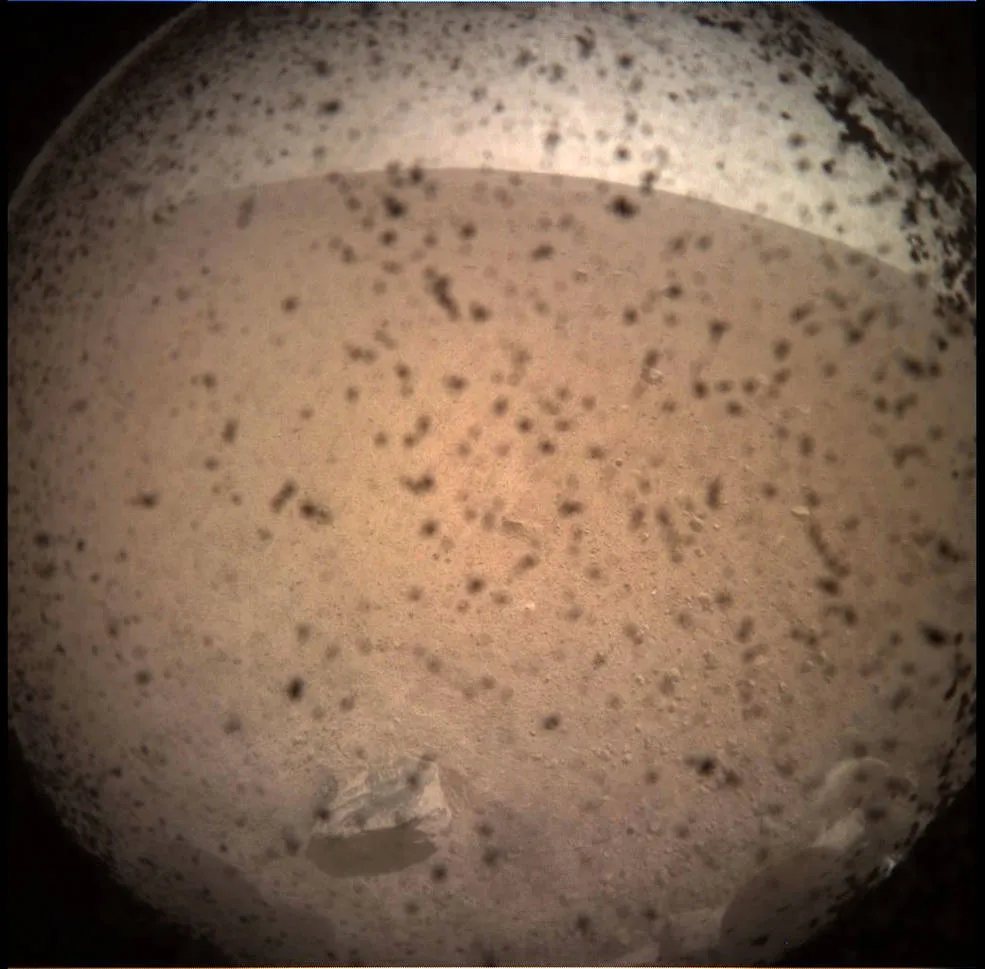
Scientists swing into action after successful Mars InSight landing
Nov 26, 2018

Following the successful landing of NASA's InSight lander on Mars, scientists quickly mobilized to begin their groundbreaking research. The mission aims to delve into the planet's internal structure and seismic activity, providing invaluable insights into its geological history. Equipped with advanced instruments, InSight will measure marsquakes and heat flow, helping to unravel the mysteries of Mars' formation and evolution. The excitement among the scientific community is palpable as they anticipate the wealth of data that will emerge, potentially reshaping our understanding of not only Mars but also the broader solar system.
After the successful landing of NASA's InSight lander on Mars, scientists around the globe have eagerly swung into action to unlock the secrets of the Red Planet. This groundbreaking mission aims to provide unprecedented insights into the Martian interior, seismic activity, and the planet's geological history. In this article, we will explore the key findings, advancements in technology, and the implications of InSight's mission for future Mars exploration.
Understanding the Mars InSight Mission
The Mars InSight mission, which stands for Interior Exploration using Seismic Investigations, Geodesy and Heat Transport, represents a significant leap forward in planetary science. Launched on May 5, 2018, and landing on November 26, 2018, InSight is equipped with cutting-edge instruments designed to study the planet's core, mantle, and crust. By analyzing seismic waves and heat flow, scientists hope to gain a deeper understanding of Mars' formation and evolution.
Key Instruments on Board InSight
InSight's success can be attributed to its advanced suite of scientific instruments, each playing a crucial role in the mission's objectives. Here are some of the key instruments:
| Instrument | Purpose |
|---|---|
| Seismic Experiment for Interior Structure (SEIS) | Detects seismic waves to study Mars' interior structure. |
| Heat Flow and Physical Properties Package (HP3) | Measures the heat flow from Mars' interior. |
| Rotation and Interior Structure Experiment (RISE) | Monitors Mars' rotation to determine its core size and state. |
Significant Findings from InSight
InSight has already yielded significant findings that challenge our understanding of Mars. Some of the most notable discoveries include:
Seismic Activity: InSight has detected numerous marsquakes, providing insights into the planet’s tectonic activity. The data suggests that Mars is still geologically active, with seismic activity occurring more frequently than previously thought.
Martian Soil Composition: The data collected by InSight has helped scientists analyze the composition of Martian soil, revealing insights into the planet's volcanic history and providing clues about past water activity.
Core Insights: Preliminary findings indicate that Mars has a molten outer core and a solid inner core, which could have implications for understanding the planet's magnetic field and its evolution.
The Role of Technology in Mars Exploration
The success of the InSight mission is a testament to the advancements in technology that have revolutionized space exploration. High-resolution cameras, sophisticated sensors, and enhanced data transmission capabilities have enabled scientists to gather and analyze data like never before. These technologies are crucial not only for InSight but also for future missions aimed at understanding other celestial bodies.
Future Implications for Mars Exploration
As scientists continue to analyze the data collected by InSight, the implications for future Mars exploration are vast. The findings could inform the design of upcoming missions, including potential human exploration. Understanding the geological and seismic activity of Mars is essential for ensuring the safety of future astronauts and the sustainability of human presence on the planet.
Collaborative Efforts: The InSight mission exemplifies the power of collaboration in scientific research. Scientists from various institutions and countries are working together to analyze the data, fostering a global effort to explore and understand Mars. This collaborative spirit is vital for the future of space exploration.
The Importance of Public Engagement
Public interest in the Mars InSight mission has been immense, highlighting the importance of engaging the public in scientific endeavors. Educational programs, outreach initiatives, and social media campaigns have helped to spark curiosity and inspire the next generation of scientists and engineers. By involving the public, scientists can build support for future missions and foster a culture of exploration.
Conclusion
The successful landing of Mars InSight has marked a new chapter in our quest to understand the Red Planet. With its innovative technology and collaborative approach, InSight is paving the way for future missions and enhancing our understanding of Mars' geological history. As data continues to be analyzed, the insights gained from this mission will undoubtedly shape the future of planetary exploration and deepen our understanding of our cosmic neighborhood.
As we look ahead, the knowledge gleaned from the InSight mission will not only inform our understanding of Mars but also enhance our capabilities for exploring other planets and celestial bodies in the solar system. The journey of discovery continues, and the scientific community remains dedicated to unraveling the mysteries that lie beyond our Earth.
Related Articles

Explore Thailand: The Best Islands to Visit for Paradise, Adventure, and Relaxation

The Ultimate Guide to the Best Islands in Thailand for Your Next Getaway

Do babies need passports? How to get a passport for a newborn

How to get a U.S. passport fast: here’s how to expedite the process

What is Mobile Passport Control: 5 reasons why you should use it

SENTRI vs. Global Entry: A detailed guide

Do you need a passport to go to the Bahamas? Let’s find out

Do you need a passport to go to Mexico? A detailed guide

Do you need a passport to go to Canada? We got the answer

Do You Need a Passport for a Cruise: An Essential Travel Guide

Booster Seat Requirements: All the Rules to Follow in Your Rental Car

What Are the World’s Most Powerful Passports, and How Does Yours Rank?

How to Take a Passport Photo at Home: A Helpful Guide

You've got to have heart! Southwest's new livery

Your opinion: Should water be free on low cost carriers?

Young women bolder than guys as solo travellers
